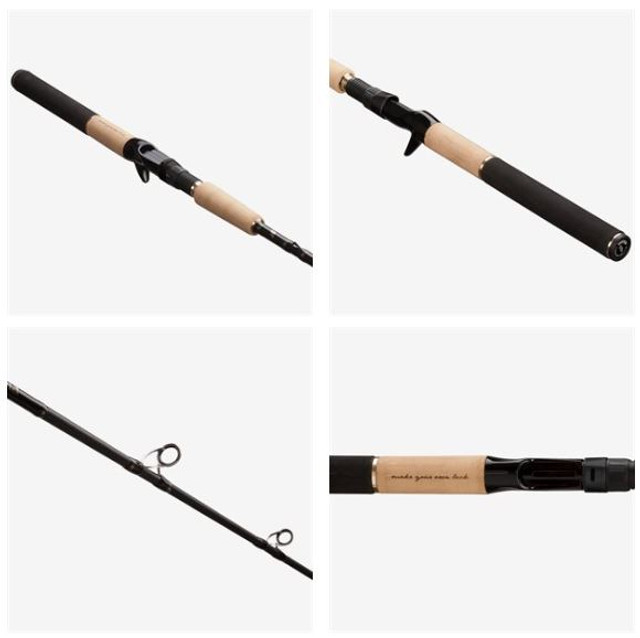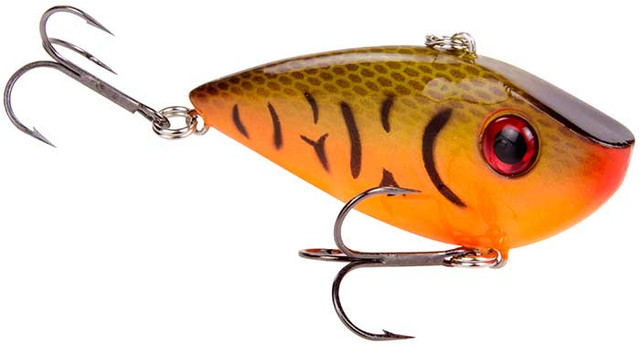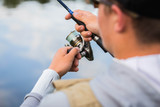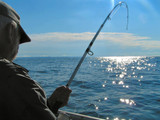Trolling Fishing Tips and Techniques for Walleye
Walleye, also known as the yellow pike or yellow pickerel, is a large species of predator fish found in Canada’s rivers and natural lakes and the northern United States. They are known for their size, with many specimens reaching over 20” in length and over 8 lbs.
Walleye are also known for being harder to find and catch than many other species, giving the cold-water fish an elusive reputation. However, with the right trolling fishing tips, this method can be one of the most efficient ways to catch and land walleye.
Why You Should Consider Trolling for Walleye
Traditional, stationary fishing techniques, such as bait or jigging, are time-tested methods that can fill your bucket or boat with fish. However, baiting and jigging for walleye have several drawbacks, including limited water coverage and depth reach, making them less ideal in large or deeper bodies of water.
These methods are also time-intensive, especially if fish aren’t biting, and require heavier tackle that may reduce sensitivity to bites. Baiting and jigging are also less effective during seasons when walleyes migrate to different water depths.
Trolling fishing allows you to exploit the walleye’s predatory instincts. Walleyes get their name from the glossy, whitish color of their eyes. They have excellent low-light vision and movement detection, allowing them to see through dark, murky waters and hunt for food.
Slowly dragging realistic lures can attract walleyes because the lures move similarly to the types of smaller bait species they hunt, like minnows or bullhead catfish.
Trolling fishing can also cover a wider area than stationary fishing techniques, increasing the chances of attracting walleyes. With the right equipment, like a downrigger, you can also target different depths, reaching into a walleye’s comfort zone instead of waiting until a walleye reaches up to your bait.
Choosing the Best Walleye Trolling Rods and Lines
Unlike more aggressive species, like northern pikes, muskellunge, or bluefish, walleyes are less likely to chase and attack anything they believe is prey. However, they can still be combative, especially when hooked.
If you are a walleye fishing beginner, don’t make the mistake of believing they are passive. While most of the challenge in catching them is finding them, they will resist when hooked in, constantly pulling and applying force on your rods, reels, lines, and knots. This means you need to bring durable and rugged equipment when trolling fishing.

Trolling Rods
Walleyes are notorious for light biting yet strong pulling. Use rods that balance strength, sensitivity, and leverage to land a walleye. Finding the right balance helps you better detect when a walleye bites and ensures your rod has the durability to battle a pulling walleye.
Some specifications to look for when shopping for walleye trolling rods include:
Rod Length
While most trolling rods range from 6’ to 12’ long, quality rods for walleye trolling fishing should fall between 7’ and 9’. This length range provides enough leverage to handle a walleye’s weight and pulling power without compromising control.
If you want to cast your line over a longer distance, choose a rod length closer to 9’. Pick a rod closer to 7’ long if you prefer more precise control over your rod. Remember that your rod’s length will also affect its overall weight and ease of handling.
Blank Material
Fishing rods for trolling are made of various materials. Graphite, fiberglass, and composite are the three most common trolling rod materials.
- Graphite: Graphite rods entered the market in the 1970s with the all-graphite Fenwick. The name comes from the graphite material found within carbon fiber, the primary material in a graphite rod.
Rods with graphite blanks are lighter and stiffer, offer faster actions, high power ratings, and have better sensitivity and precision overall. However, this material is the most expensive, meaning replacing a snapped graphite rod is typically quite costly.
- Fiberglass: Fiberglass blanks were first introduced in the 1940s, gradually replacing rods made of traditional materials like bamboo, wood, or cane.
Although it is no longer the lightest material on the market, fiberglass is more durable, flexible, less expensive, and easier to maintain. While fiberglass rods are generally slower-action than graphite, it can benefit beginners and inexperienced anglers by giving them more time to correct wrong moves. - Composite: A composite fishing rod blank is fabricated from a specific combination of carbon fiber (graphite) and fiberglass materials. Depending on its exact composition, a composite rod will offer partial characteristics from graphite and fiberglass, creating a middle-ground compromise.
While quality composite trolling rods can be more versatile, they generally can’t reach the accuracy of the best graphite rods or the flexibility of the best fiberglass models.
Rod Power Rating
The power of a fishing rod refers to its stiffness, strength, and ability to withstand forces and weights. Power ratings range from ultra-light to extra-heavy. The higher the power rating, the more accessories it can support, such as sinkers and planner boards.
A higher rod power also means it can withstand heavier and stronger fish. However, choosing a rod with an excessively high power rating can make the rod blank too stiff, reducing its sensitivity and making it harder to cast lighter lures.
For walleye trolling fishing, selecting a rod with a medium to medium-heavy power rating is critical. These rods balance the strength to withstand a pulling walleye and the sensitivity to detect its light nibbles.
Action
The action of a rod refers to the amount of bend or flex it has when force is being applied. A rod’s action is referred to using terms of speed, slow, moderate, fast, or extra-fast. The faster the rod’s action, the less the rod bends under pressure.
-
Extra-fast: These rods bend only at the tip, up to about ⅛ of its overall length. They offer the fastest response, returning to their resting position very quickly. These characteristics make it easy to apply the rod’s power more quickly.
However, they may not provide enough give for larger fish like walleye, increasing the risk of them breaking free. -
Fast: These rods bend slightly more than extra-fast ones, ¼ to ⅓ from the tip. While they aren’t as quick to respond as an extra-fast rod, they offer more sensitivity and provide more give. These factors can help keep larger fish like walleye hooked and help you detect lighter bites more easily.
While you may not have the same instant ability to apply power as an extra-fast rod, the other advantages help make fast rods more well-rounded. - Moderate: These rods bend up halfway to ⅔ from the tip. They are even more sensitive than fast rods, making it even easier to detect bites. Due to the extra flex, they cause less fatigue than fast or extra-fast rods, which can be beneficial for less strong anglers.
However, the slower recovery from bending can limit your casting distance and increase the risk of your line twisting and tangling. - Slow-action rods bend up to the handle and can form a C or U shape at maximum bend. They offer the highest sensitivity to bites and the best resistance to pulling forces, meaning heavier walleyes are less likely to snap your line or break the rod.
However, they require more precise rod control to pull and land the fish successfully, making it less suitable than faster actions for beginners.
The best rod actions for walleye trolling applications should fall between fast and moderate. These rods offer the right sensitivity to detect a walleye’s bites while letting anglers apply the rod’s power efficiently, increasing the chances of successfully landing it.
Trolling Lines
Today’s two most common fishing line options are braided lines and monofilaments, also called mono lines.
Monofilament Line
This line is made of a single thread of fiber. In the past, traditional monofilament lines were made of silk. Today, they have been replaced with modern materials like nylon or PVDF.
Mono fishing lines are less expensive and easier to use than braided lines. They also stretch more, allowing them to withstand more force before snapping, which can be advantageous when dealing with vigorous walleyes.
Braided Fishing Lines
These comprise multiple single lines of fibers braided together. They are usually made from highly durable synthetic fibers like nylon, Spectra, or Dyneema.
While they are costlier, they are also stronger and longer-lasting. Because they have less flex than monofilament lines, they are more sensitive to changes in pressure, which can help you detect bites more efficiently.
Despite the pros and cons for each type, monofilament is generally recommended for trolling walleye. Although braided lines can be advantageous in some circumstances, trolling fishing requires multiple rods. Outfitting all of them with braided lines can be prohibitively expensive, making mono lines the natural choice.
Additional Tips to Improve Your Walleye Trolling Technique
Besides ensuring your boat is equipped with the best rods and lines for the job, following the right tips and tricks can help improve your chances of landing more fish and serving walleye fillet on the table.
Consider Using Planer Boards
Planer boards are flat plastic or metal devices designed to be attached to your fishing lines. Their purpose is to maintain your lines on the sides of your boat instead of letting them trail behind, reducing the risk of spooking walleyes and spreading them out at different distances without tangling.
Planer boards also let you adjust the depth of your baits and lures. Strategically using planer boards at different depths can help you cover a greater surface area and a wider variety of depths, boosting the chances of a bite..

Properly Tuning Your Crankbaits
A crankbait is a type of lure specifically designed to resemble the baitfish that walleyes hunt. Besides looking the part, they are also designed to dive and move erratically when trolled, imitating the natural movement of a baitfish in the water.
Correctly tuning your crankbait is crucial. A properly tuned crankbait should move naturally to attract walleyes. You can test whether your crankbait is properly tuned by attaching it to your line, holding it up, and observing its alignment.
If your crankbait tilts slightly to one side, it needs extra tuning. Adjust the eyelet in the opposite direction of the tilt, then recheck the alignment. If it appears straight, test your crankbait in clear water and ensure it moves naturally.
Be Aware of Walleye Depth
Due to their excellent low-light vision, walleyes can hang out at up to 40’ of depth, lower than many other fish species. This factor means that, when fishing for walleyes, it is crucial to understand which depths they are most likely to be found. These depths change depending on the time of day and the weather.
For instance, in the early morning and dusk, walleyes can be found in shallow waters to feed at depths of 5’ to 15’. In the middle of the day, the walleye’s depth varies depending on the outside temperature. The warmer, the more likely they will travel at deeper depths. During milder months, walleye depths typically range from 10’ to 20’. They can reach as deep as 40’ in warmer months to seek cooler water.
You can use a lure depth chart to target walleyes at different path ranges and boost your chances of landing fish. Lure depth charts allow you to measure the exact line of length to let out if you want a crankbait to reach a specific depth. Don’t forget to calibrate your trolling reels to ensure your lines are exactly at the distance displayed on the counter.
Find the Best Walleye Trolling Gear at FISH307
Catching walleye requires adequate preparation and the best gear available, whether you prefer trolling or other fishing methods. Visit FISH307 today and find the best rods, lines, lures, and accessories to find and reel in your next big catch.
Our store is local to the Lake George area, home to a large population of walleyes and many other fish, such as bass, Northern pike, and chain pickerel. Need more trolling fishing tips? Have questions about our products? Don’t hesitate to contact us. We’ll help make your next fishing trip a success.
Recent Posts
-
Best Time To Go Fishing
Finding the perfect time to go fishing can increase your chances of a successful catch. Whether y
-
Saltwater Fishing Tips
Saltwater fishing combines skill, patience, and a bit of luck for limitless adventures. From the




